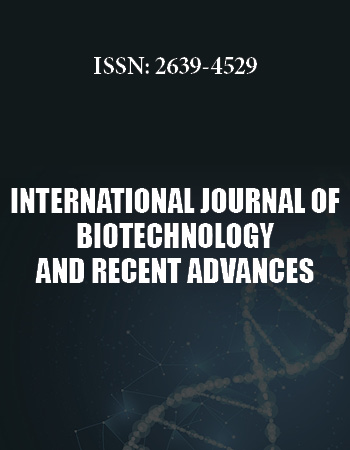International Biotechnology and Research Conference
April 25-27, 2018 Rome, Italy
Assessing the Microbiome Dynamics in Three Photo-Bioreactors Established for Coking Wastewater Treatment: An Orchestration between Microalgae and Bacterial Communities
1Department of Microbiology and Immunology, Cairo University, Egypt
2Department of Microbiology and Immunology, October University for Modern Sciences and Arts, Egypt
The investigation of microbial community structures is a significant way to understand biodegradation capacities in biological wastewater treatment processes. Photo-bioreactors A, B and C received real coking-wastewater as influent with COD 776 ± 56, 1229 ± 85 and 2033 ± 27 mg/l, respectively. In phase-1 phenol was added to the influent, while dichlorophenol was added in combination with phenol in phase-2. Treatment efficiency of algal-bacterial systems was biomonitored using different bioassays (phytotoxicity, Artemia toxicity, cytotoxicity, algal-bacterial ratio and settleability). COD removal %, phenol and dichlorophenol concentrations were also monitored. All systems efficiently detoxified the influents in phase-1. In phase-2, Systems B and C failed to detoxify the influents. Illumina-sequencing generated 2119749 effective sequences of 16S-rRNA gene from 21 samples collected from different influents and effluents. The number of observed species was significantly lower in effluent samples than influent samples, as some taxa dominated in photo-bioreactors and contributed to the systems performance. Significant difference in the microbial diversity between influent and effluent samples was detected. Proteobacteria (78%), Firmicutes (12%), Bacteroidetes (5%) and Deferribacteres (2%) were the dominant phyla in influent samples. While in effluent samples Proteobacteria (68%) and Bacteroidetes (25%) dominated. Failure in treatment process in systems B and C at phase-2 was accompanied with significant difference in the microbial diversity. Significant relative abundance of anaerobic bacteria from Deferribacteraceae and Peptococcaceae families in influent samples conformed to the nature of coking-wastewater. The co-culture of microalgae shifted the microbiome and promoted the activity of genera affiliated to Chitinophagaceae, Pseudomonadaceae and Xanthomonadaceae families, which dominated in effluent samples. These bacteria are known for their catabolic diversity that enables xenobiotic degradation. The superiority of algal-bacterial systems for coking-wastewater treatment was confirmed as co-culture of microalgae eradicated pathogenic bacteria such as Arcobacter and Legionella genera in the treated effluent.
Biography:
Mariam Hassan is an Assistant Lecturer in Department of Microbiology and Immunology, Faculty of Pharmacy, Cairo University. She teaches the practical courses to the undergraduate and graduate students. She is working on her PhD project on biomonitoring water microbiome(s) involved in biological wastewater treatment processes. She had a experience on experience: microbiology, biotechnology, biodiversity, bioinformatics and high through put data analysis.


